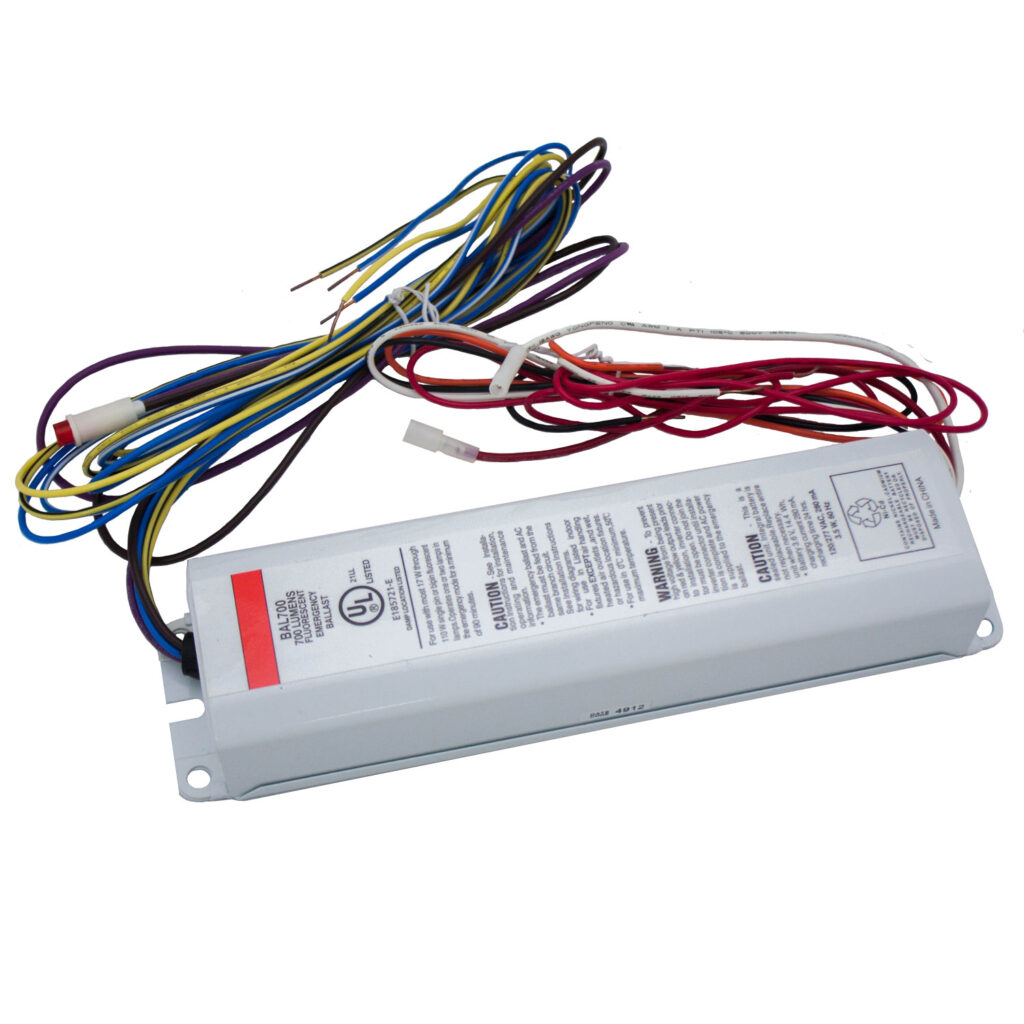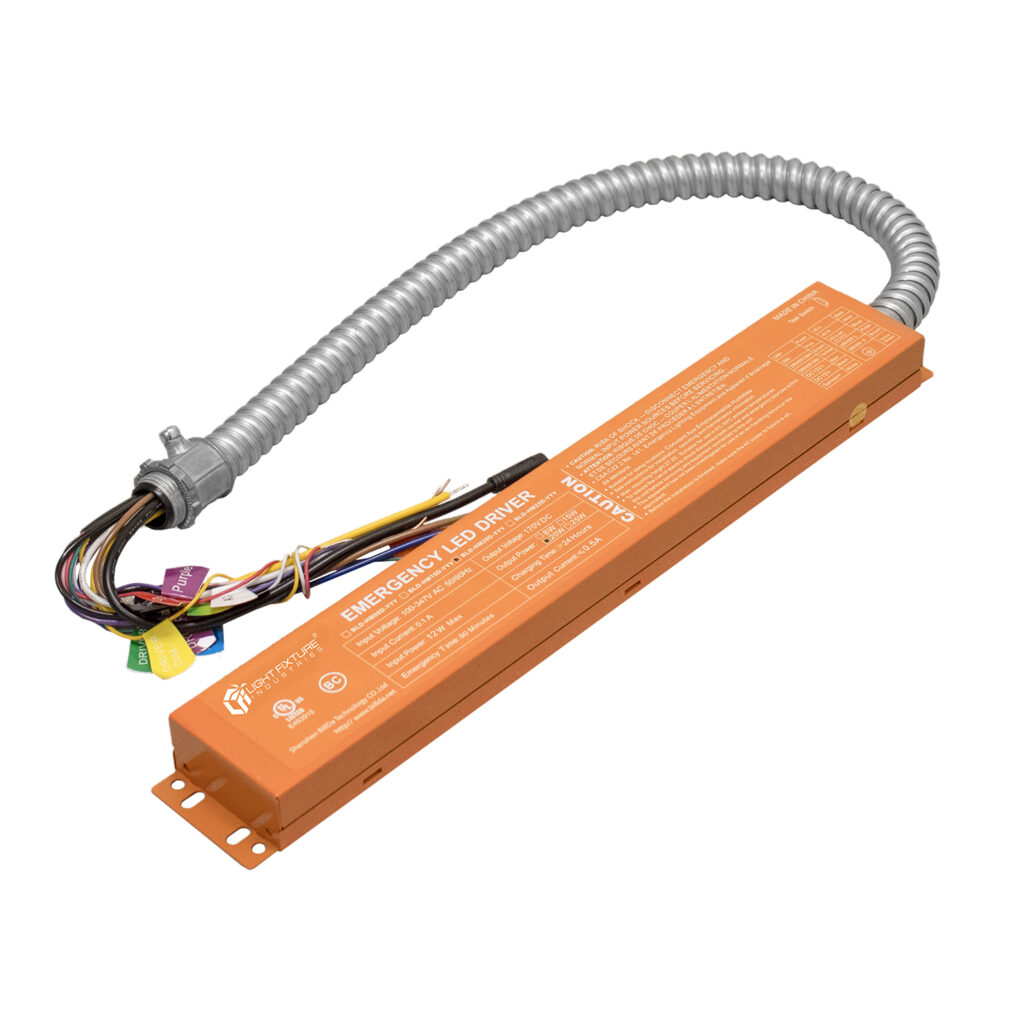Understanding the Difference
When upgrading or designing a lighting system, it’s essential to understand the technology behind the fixtures you’re installing. Two critical components of lighting systems that often get compared are LED drivers and fluorescent ballasts. While they both serve the purpose of powering lights, they work in fundamentally different ways due to the distinct technologies they support. Let’s break down the differences to help you make more informed decisions when it comes to your lighting needs.
What is a Fluorescent Ballast?
A fluorescent ballast is an electrical device that regulates the current to fluorescent lamps. It ensures that the lamp receives the right amount of power to start and stay illuminated without consuming too much energy or burning out prematurely.

Here’s how it works:
Starting the Lamp: Fluorescent lights require a high initial voltage to ionize the gas within the tube. The ballast supplies this voltage at startup. – Current Regulation: Once the lamp is on, a ballast controls the electrical current flowing through the light. Without it, the light could draw too much current and burn out quickly.
Ballasts come in two varieties:
Magnetic Ballasts: These older types use an electromagnetic coil to regulate current, often resulting in flickering lights and audible humming. They are less energy-efficient and are being phased out in favor of more modern technology. – Electronic Ballasts: These are more efficient and use electronic components to regulate current more precisely, eliminating flickering and reducing energy consumption.
What is an LED Driver?
An LED driver is a device that regulates the power supplied to an LED (Light Emitting Diode). Unlike fluorescent lights, LEDs run on low-voltage direct current (DC), which is why an external driver is necessary to convert the high-voltage alternating current (AC) from the mains supply into the required DC voltage.

Here’s how LED drivers function:
Current Regulation: LEDs are sensitive to changes in current. Too much current can damage the diodes, while too little can cause them to underperform. The LED driver ensures the right amount of current flows through the LED to produce consistent, reliable light. – Voltage Conversion: Drivers convert high-voltage AC power from the mains to a lower voltage, typically between 2-4V DC for the LEDs.
There are two main types of LED drivers:
Constant Current Drivers: These deliver a consistent current to the LEDs, adjusting voltage as needed to maintain proper operation. – Constant Voltage Drivers: These supply a consistent voltage and rely on additional circuitry to control current.
Key Differences Between LED Drivers and Fluorescent Ballasts While both LED drivers and fluorescent ballasts regulate power, the type of lighting technology they support leads to a few fundamental differences:
| Feature | Fluorescent | LED Driver |
|---|---|---|
| Power Conversion | Controls AC current for fluorescent lamps | Converts AC to DC for LEDs |
| Type of Current | Alternating Current (AC) | Direct Current (DC) |
| Starting Voltage | Provides a high voltage to start the lamp | No need for high starting voltage |
| Efficiency | Generally, less efficient | Highly efficient |
| Compatibility | Designed for use with fluorescent tubes | Specifically for LED lighting |
| Durability | Prone to flickering, lower lifespan | Long-lasting, consistent performance |
Why the Difference Matters
The key takeaway is that LED drivers and fluorescent ballasts are designed for entirely different lighting technologies. Fluorescent lamps rely on ballasts to ignite and regulate the electrical current necessary for operation, while LED lights need drivers to convert power and maintain efficient performance. As lighting technology advances, LEDs are becoming the preferred option due to their energy efficiency, longevity, and overall performance, and understanding the role of LED drivers in this process is crucial.
If you’re considering an upgrade to your lighting system, transitioning to LED lighting with compatible LED drivers offers substantial long-term benefits, including lower energy costs and fewer replacements compared to traditional fluorescent lights.
Final Thoughts
Choosing between LED lighting and fluorescent lighting means understanding the crucial differences between their supporting components—LED drivers and fluorescent ballasts. While both regulate electrical flow, their application and technology differ significantly. With LEDs becoming more popular for their efficiency and performance, understanding how LED drivers work will help you ensure your lighting setup is optimized for the future.
Ready to Purchase?
